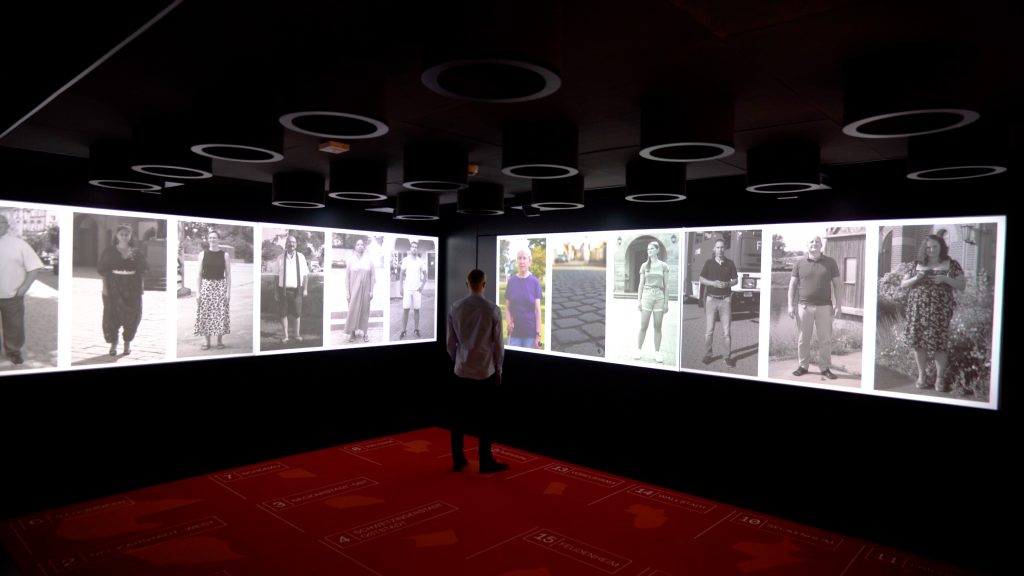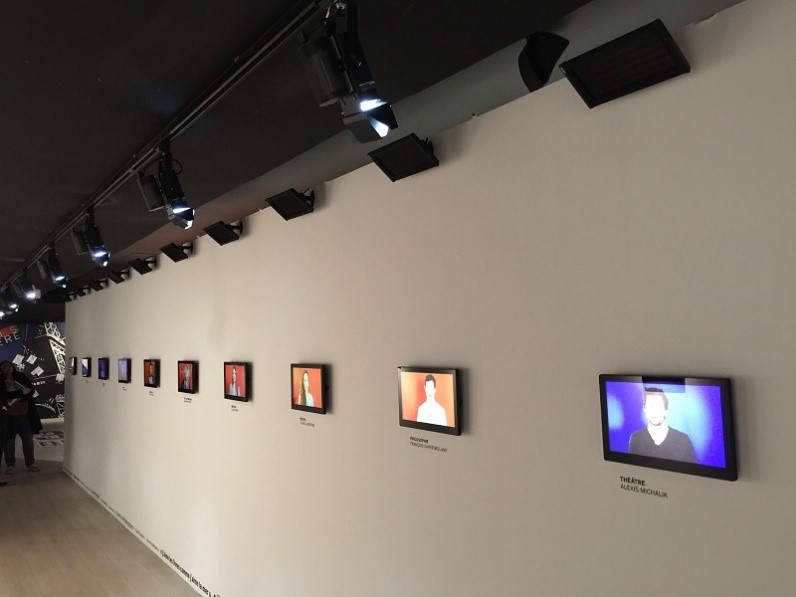Directional sound, one of the latest innovations of recent years, is making the world of audiovisual media shine. There are a variety of brands that are taking on the adventure, each with its own formula. Among them is Waves System with its Hypersound directional sound system. This article will help you understand directional sound and its benefits, and the background of this technology that is and will be a source of new sensory experiences.
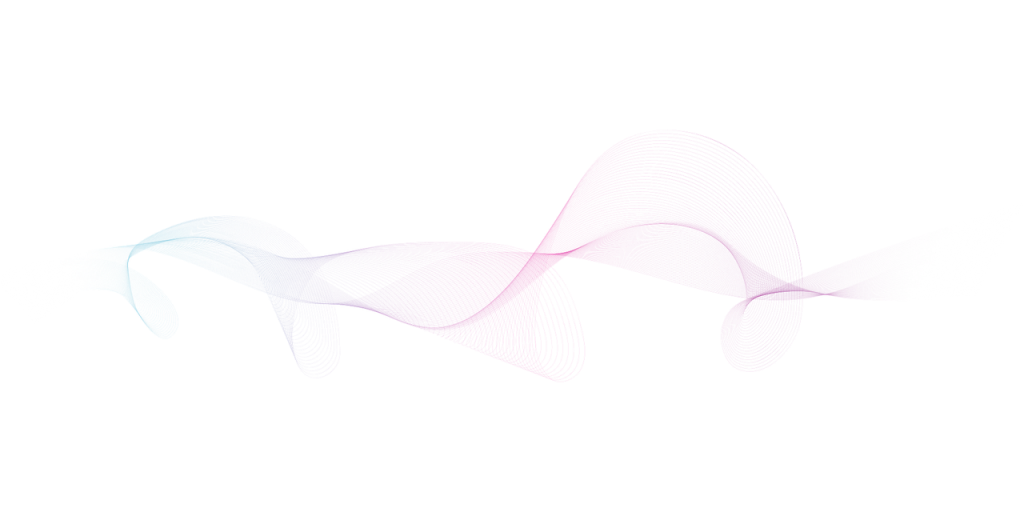
What is Directional Sound?
Directional sound refers to the technology of using various devices to create sound patterns that spread out less than most conventional speakers. There are several techniques to achieve this, and each has its advantages and disadvantages. Ultimately, the choice of a directional speaker depends largely on the environment in which it will be used, as well as the content to be played or reproduced. Consideration of these factors leads to the best results when evaluating directional sound system technologies.
For all wave-generating sources, the maximum directivity of a source corresponds to the size of the source compared to the wavelengths it generates: the larger the source compared to the wavelength of the sound waves, the more directional the beam. The specific transduction method does not affect the directivity of the resulting sound field, the analysis relies only on the aperture function of the source according to the Huygens-Fresnel principle. We can notice that the ultrasonic loudspeakers achieve high directivity by modulating audible sound to high-frequency ultrasound. The higher frequency sound waves have a shorter wavelength and therefore do not propagate as quickly. For this reason, the resulting directivity of these devices is much higher than is possible with any loudspeaker system. However, they are reported to have limited low frequency reproduction capabilities.
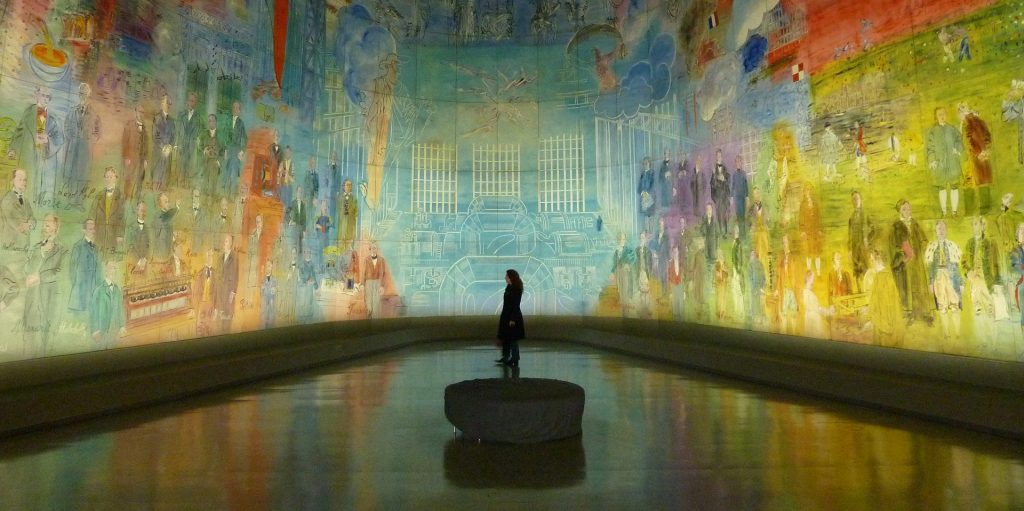
What are the advantages of a directional sound system?
The directional loudspeakers are used especially where the sound & tone is desired targeted to a listening position without sounding the entire listening area. Prime examples include promotions in retail showrooms or exhibitions, displays in art galleries or museums or even targeted public address and warning systems. Directional speakers have a strong directional characteristic in the entire frequency range and are designed for targeted sound reinforcement in defined listening zones and in rooms with high reverberation time. They provide excellent speech intelligibility and low feedback tendency during microphone operation. They have been used successfully in the USA for years, but have barely gained a foothold in Europe. These directional loudspeakers make it possible to cover only a limited area. To summarize, this technology is particularly relevant for applications around visitor attraction and in public places where there is the requirement for sound to be directed or contained.
Ultrasound loudspeaker
A bit of history
The man who most likely discovered ultrasound was named Lazzaro Spallanzani (1729-1799). He was a physiologist, teacher, and priest who conducted many experiments that advanced modern biology.
In 1794, Professor Spallanzani conducted several studies on bats that led him to conclude that bats move by sound rather than sight. Bats use almost inaudible sounds to orient themselves.
“The first detailed experiments suggesting that inaudible sounds might exist were performed on bats by Lazzaro Spallanzani,” D. Kane, W. Grassi, R. Sturrock, P. V. Balint; A brief history of musculoskeletal ultrasound: ‘From bats and ships to babies and hips,’ Rheumatology, Volume 43, Issue 7, 1 July 2004.
Is ultrasound dangerous for human hearing?
Yes and no, after years of research we can now use ultrasound in various forms. Many devices have been developed for medical use, but also for music. The forms that are used in medicine or even in commerce are harmless forms of ultrasound.
Airborne ultrasound has no measurable effects on hearing and shows no adverse effects in safety studies conducted by recognized specialists in acoustics research. Levels and exposures are much lower than medical applications of ultrasound that are routinely used.
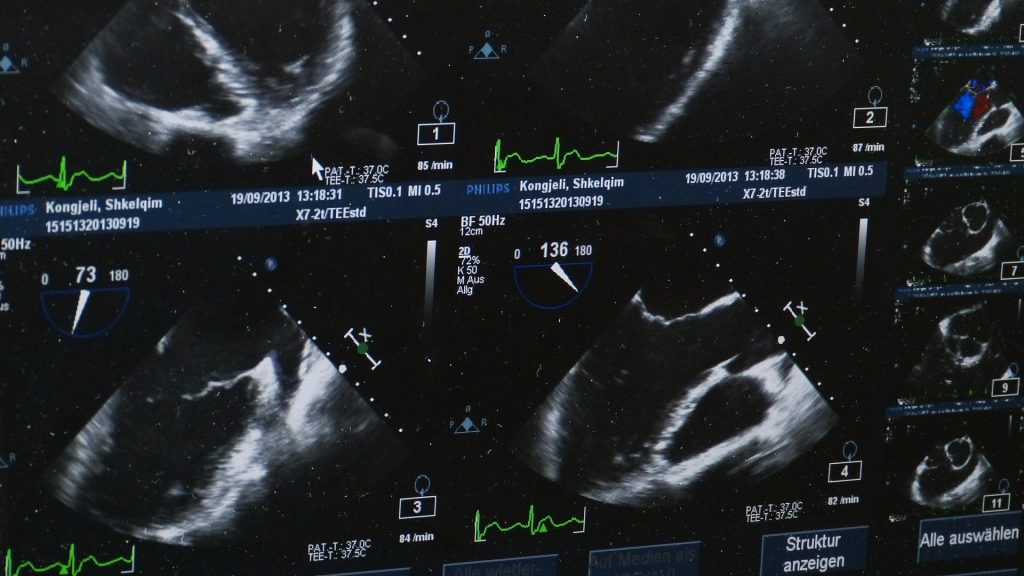
People are routinely exposed to a variety of industrial and commercial ultrasonic sounds, including jet noise, cleaning equipment, drills, welders, emulsifiers, dog repellers, alarms, etc. It is well known that the skin absorbs ultrasound from the air very poorly and typically reflects 99.90% of ultrasound energy.
In a study published in 2002, Martin L. Lenhardt, Ph.D., Au.D., a bioacoustician and health effects specialist examined the risks of exposure to an ultrasonic beam and to low-frequency (20-100 kHz) airborne ultrasound in general. After reviewing the published literature, he concluded that exposure to sound in this range should pose essentially no risk for threshold changes or hearing damage at an OSHA limit for exposure to low-frequency airborne sound of 145 dB (OSHA’s standard for occupational ultrasonic noise) or below. A study of 20 subjects in which hearing thresholds and tympanograms were measured before and after exposure revealed no statistically significant effects on hearing, either temporary or permanent. The absence of any effects on hearing suggests that listening to sound frequencies with this method is comparable to listening through a normal loudspeaker.
Some Use Cases
First of all, I would like to explain how best to install a directional sound system. For this we will take the example of Hypersound, directional speaker from Waves System. There are two types of use that are very common. The first is the use as a sound shower: this is one of the most common applications. In this type of installation, the directional speaker should be optimally placed about 3.5 m from the audience to avoid reflection of sound from the floor. This avoids scattering of sound waves that could disturb the neighbor. For it is possible to place several directional Hypersound speakers at a distance of 1 m, saving space in the room. This type of installation is perfect for museums, for example.
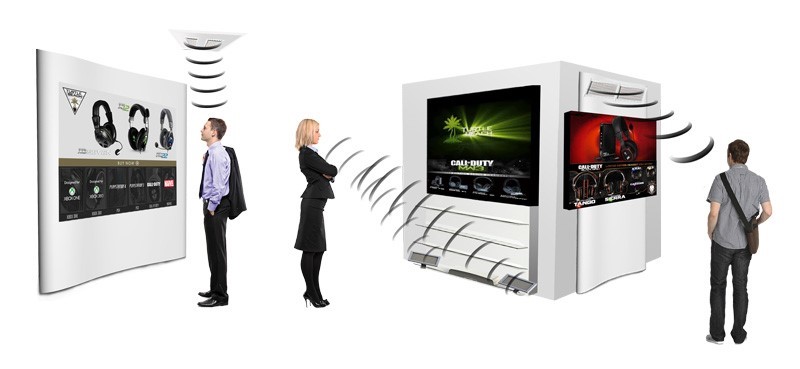
The second most common application is for virtual speaker. As mentioned earlier, the sound waves from the directional speaker spread out when they hit a solid surface. For example, if the ultra-directional speaker is placed in a corner of the room facing a wall, it will radiate waves throughout the room, enclosing the audience. It is almost impossible to identify the source of the sound. This use is popular in retail stores, for example. The speaker makes it possible to create an overall atmosphere in the store, creating a true customer experience.
Here are some use cases for a better illustration.
